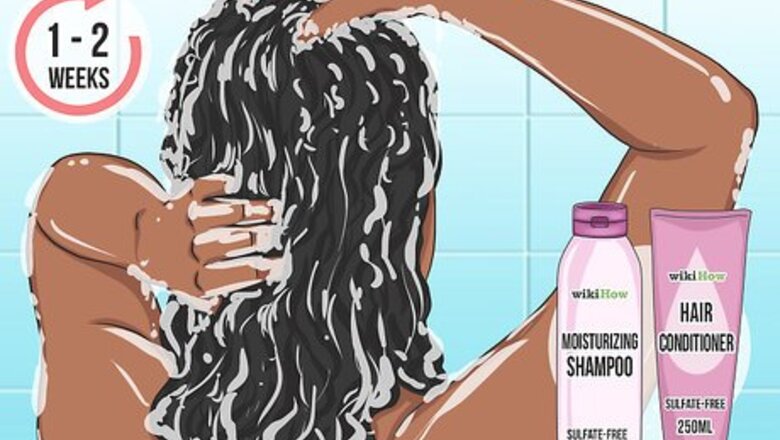
views
Washing with Care
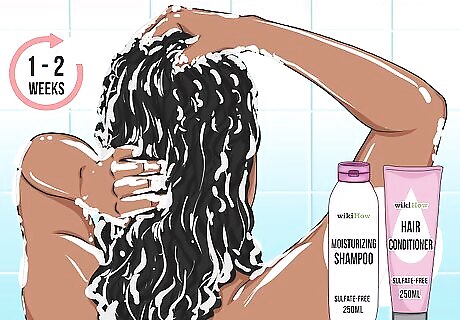
Wash your hair every 1 to 2 weeks with a moisturizing shampoo and conditioner. If you wash your hair more often then that, your hair will end up too dry and brittle. This can lead to breakage. If you need to wash your hair more often, consider using just conditioner. This is known a "co-washing" and is safe to use regularly, because it doesn't strip hair of its moisture. Consider rinsing your hair with cold water. This will help seal the hair cuticles, and make it appear smoother.
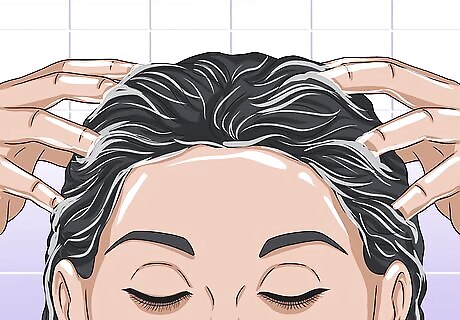
Use the pads of your fingers to massage your scalp, and never pile your hair on top of your head. If you pile your hair on top of your head as you massage your hair and scalp, you will create tangles and make it more difficult to detangle later on. Instead, massage the hair, starting from close to the scalp and going down to the ends of the hair, to prevent your hair from tangling. Never use your fingernails to scrub your scalp. Focus the shampoo on your scalp, and the conditioner on the ends of your hair. It may be helpful to wash the hair in sections, especially if you have longer or thicker hair.
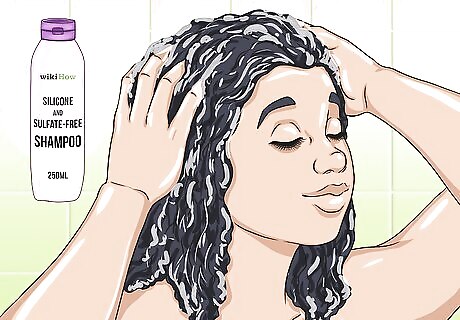
Use a silicone and sulfate-free shampoo. Silicones are great for making hair smooth, but they can only be washed out using sulfates. Sulfates are harsh cleaning agents that strip hair of its moisture, leaving it dry and brittle. If you don't wash the silicones out, you will end up with build-up in your hair, which can leave it looking limp and greasy. Just because a product says that it moisturizes, doesn't necessarily mean it's true. Always look at ingredients on the back label rather than empty promises on the front.
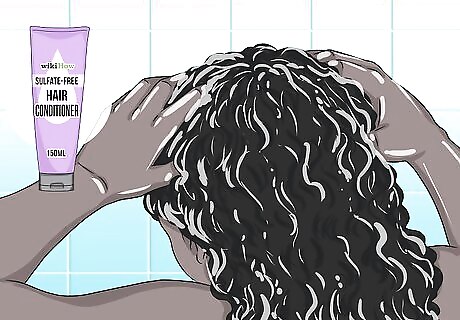
Always follow shampooing up with conditioner to maintain moisture. After you have rinsed the shampoo out, divide your hair into sections, and apply the conditioner. Then, gently comb your hair with a wide-toothed comb. This will allow for a more-even distribution of the product. It will also make your hair easier to detangle later on. Rinse the conditioner out after a couple of minutes (or as per the conditioner’s directions).
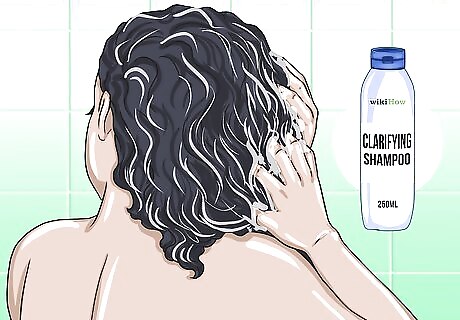
Be wary of hard water. If you live in an area with hard water, consider getting a shower filter. Hard water contains minerals that can lead to build-up, and make your hair dry, brittle, and unmanageable. You can also use a chelating or clarifying shampoo once a month instead to clear up buildup and improve the state/manageability of your hair.
Adding Moisture and Nourishment
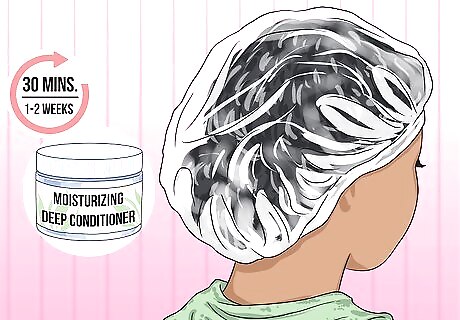
Use a moisturizing, deep conditioner every 1 to 2 weeks. Apply the deep conditioner to damp hair, then tuck your hair under a shower cap. Leave it there for 20 to 30 minutes before rinsing it out. Heating caps can be used to boost the performance of the deep conditioner. If you do not have a heating cap, tuck your hair under a plastic shower cap, then drape a towel over your head, like a hood. Use a blow dryer to heat the inside and outside of the towel.

Consider using a moisturizing, leave-in conditioner, followed by a natural oil. The leave-in conditioner will moisturize your hair, and the oil will help "seal" the moisture in. Make sure to cover all your hair with the leave-in and oil. You can use just about any natural oil, including: Argan, almond, castor, coconut, jojoba, and olive. You can also use natural butters, such as shea butter.
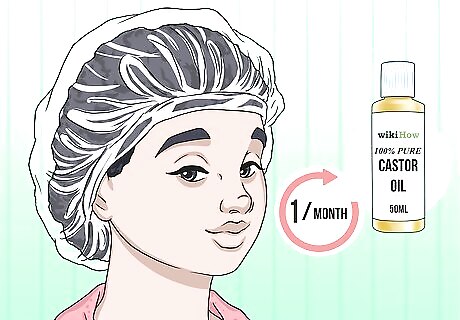
Consider a hot oil treatment once a month for extra moisture. Heat ½ to 1 cup (120 to 240 milliliters) of oil in a double boiler, then apply it to your hair. Tuck your hair under a shower cap for about 20 minutes, then rinse it out with shampoo. You can use any type of natural oil, such as: Argan, avocado, castor, coconut, jojoba, and olive. Don't use a microwave, or you'll destroy the oil's nutrients. Warm oil is easier for hair to absorb than room-temperature oil.
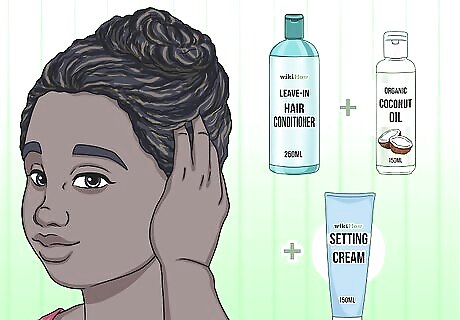
Try an over-night mask with a leave-in conditioner, oil, and setting cream. Apply some leave-in conditioner, oil (such as coconut oil), and setting cream to your hair, then twist it. Cover your hair with a scarf or bonnet, and fluff it out the next day. On the third or fourth night, you can re-twist your hair. Spritz your hair with water to re-activate the leave-in conditioner, and reapply the oil and cream. Use a little bit less product than the first time, since the same products are already in your hair from before.
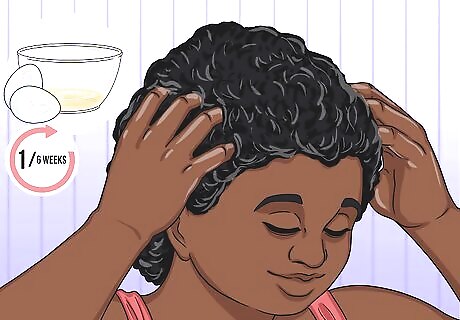
Try a protein treatment once every six weeks for extra strength. If you have finer hair, you can use it as often as once a week. You can use either a store-bought protein mask, or make your own. Consider massaging egg whites into your hair and letting it sit for ten minutes under a shower cap. Wash it out with cool water, not hot. Egg white contains vitamins which will make your hair healthy and strong.
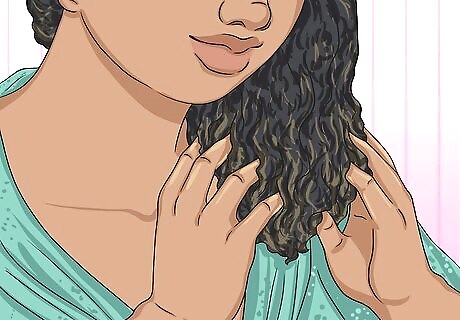
Always focus conditioners, oils, and butters on the ends of your hair. These are the oldest parts of your hair, and need the most moisture. Dry hair is brittle hair, and brittle hair tends to break easily. If you don't take good care of the ends of your hair, it will just keep on breaking; it won't "grow" very fast.
Brushing, Styling, and Managing

Always use a wide-toothed comb, and never a brush. Fine-toothed combs can snag and break hair, while brushes can lead to frizz. When combing your hair, remember to start from the tips, and work your way up. Never comb straight down from roots to ends. You can also gently comb your hair out using your fingers.

Avoid using heat, if possible, and always use a heat protectant spray when you do. Try to use a lower temperature, if you can, as heat protectant sprays can only do so much. It may take longer to get the results you want, but it will be safer for your hair. When heat styling, don't go above 380°F (195°C). Great styles that enable you to cut down on harsh heating tools include: roller sets, braid-outs, twist-outs, bantu knot outs, buns, and ponytails.
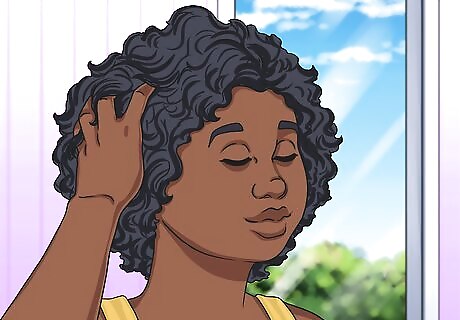
Try to air dry your hair whenever possible. This is the safest way to dry your hair. Consider putting your hair into twists or braids first. When you take them out, after your hair dries, you'll end up with beautiful curls. Avoid drying your hair out in the sun, however, as the sun's rays can be just as harmful to your hair as your skin. If you must dry your hair out in the sun, consider using a UV protectant spray for hair first.
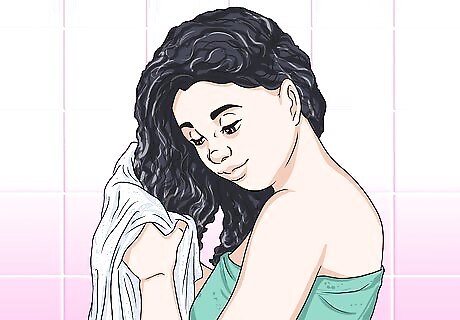
Be gentle with your hair when towel-drying it. Never rub your hair with a towel, as this can lead to frizz and breakage. Instead, gently pat it dry, preferably with a microfiber cloth or towel. You can also use a t-shirt instead. To preserve your curls, consider wrapping your hair in a microfiber towel or t-shirt instead.
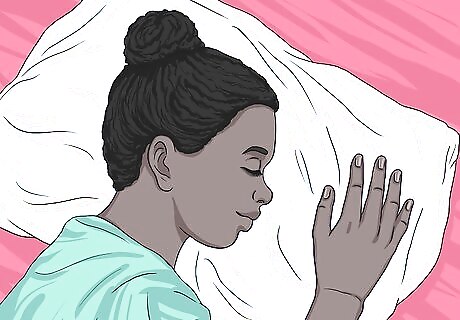
Keep your strands protected at night by using a satin pillowcase. If your hair is long, or not already in a protective style (such as braids or twists), consider putting your hair into a high ponytail or high bun. This will help preserve curls and prevent your hair from getting tangled and roughed up as you toss and turn throughout the night. You can also use a silk or satin scarf or bonnet instead. Cotton pillowcases are not recommended because they draw the moisture out of your hair. They also tend to be coarse, and can lead to snags, frizz, and breakage.

Keep your hair in braids or cornrows to reduce breakage and hair loss. At the same time, however, avoid braiding your hair too tightly, as this can weaken the hair follicles and lead to hair loss. Also, remember to care for your hair and scalp. You should wash and condition your hair at least every two weeks. After taking your braids out, be sure to detangle your hair before washing it. If you don't do this, your hair will get matted. Consider giving your hair and scalp some time to recover from the pulling involved with braiding/twisting every once in a while.










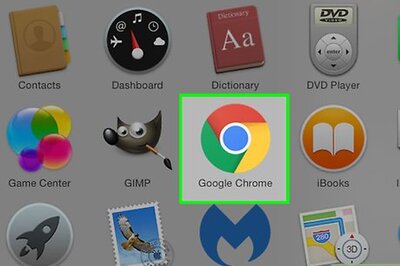


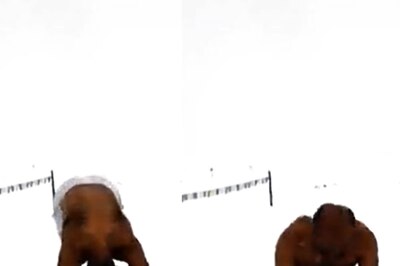





Comments
0 comment